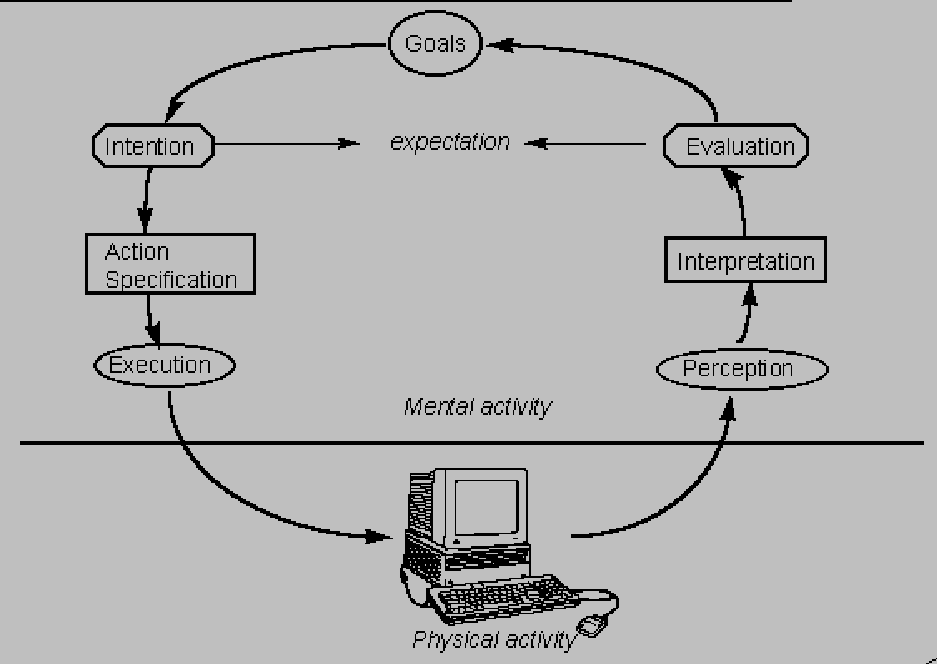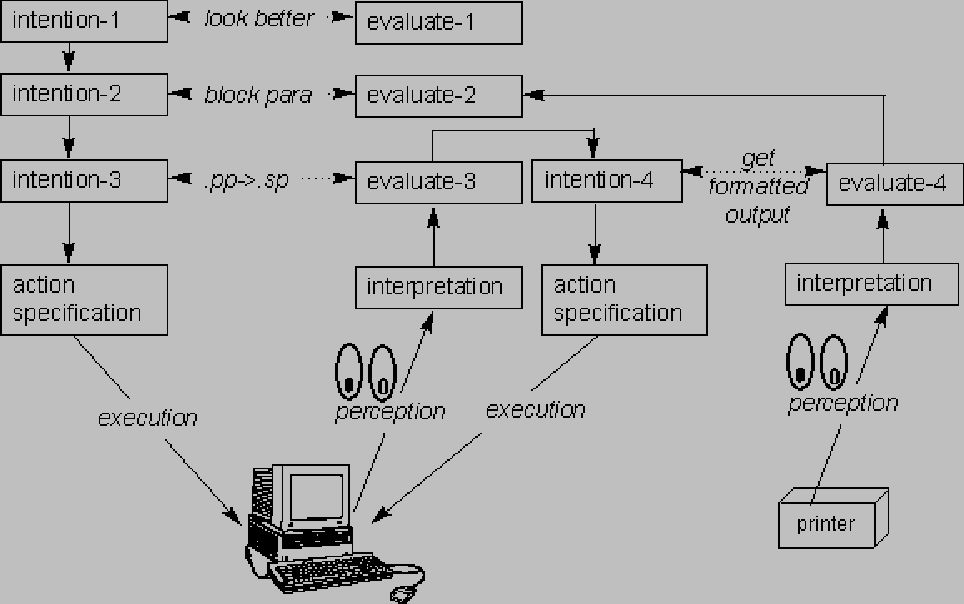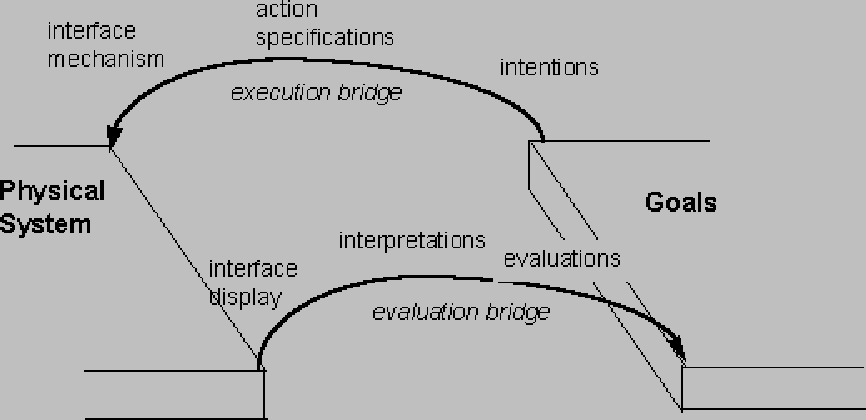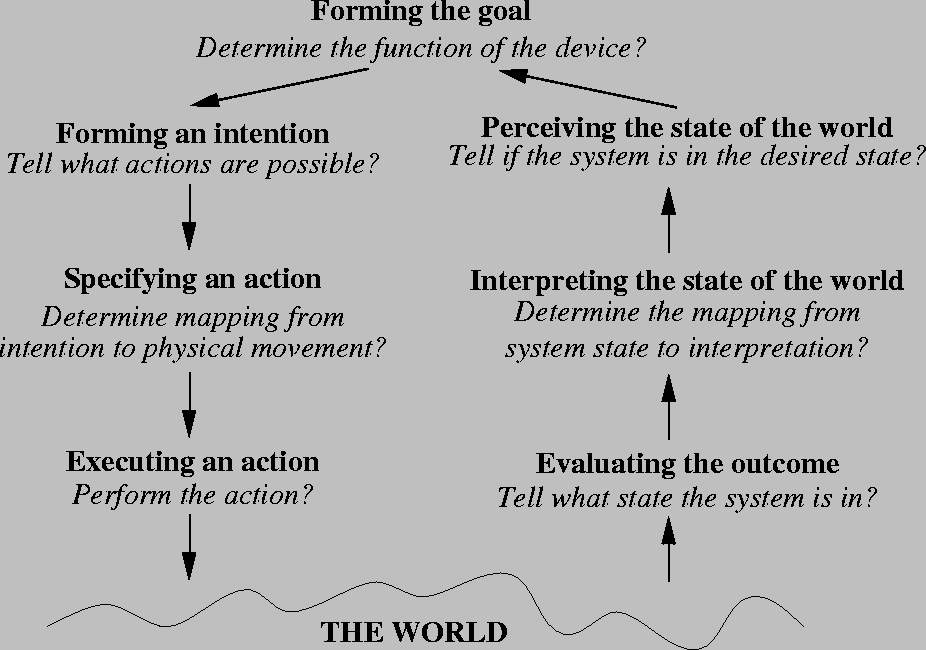
CS 66-460
Introduction to Graphical Human Machine Interfaces
The Psychology of Everyday Actions
MONDAY, JANUARY 27, 1997
Instructor: G. Bowden Wise
Rensselaer Polytechnic Institute
Spring 1997
WE BLAME OURSELVES
a faulty mental model is at work!
Occurs when a person experiences failure numerous times and then decide that the task cannot be done ( at least by them! ) so, they are helpless.
Occurs when a person generalizes his instances of failure to other similar tasks (i.e., I am no good at math or I can't cope with new technology).
EXECUTION
EVALUATION


Refers to how well the system/device enables a person to perform the intended actions directly without extra effort.

Reflects the amount of effort a person must exert to interpret the physical state of the system and to determine how well the expectations and intentions have been met.



Coherent system image.
Consistency in presentation of operations and results.
Metaphor?
Is the state of the system easily visible?
Can alternative actions be easily found?
Show relationships between
Continuous feedback of results and actions.